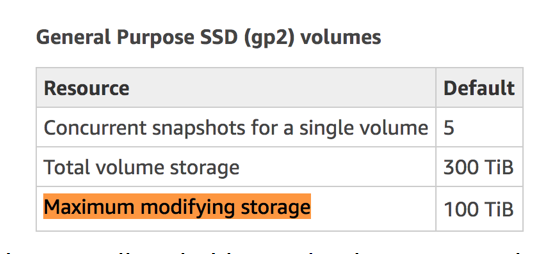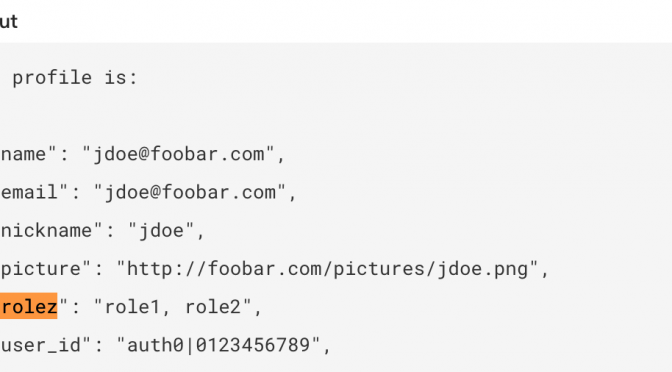If you are dealing with big amounts of EBS volume and need to extend it you might face one day an AWS VolumeModificationSizeLimitExceeded error.
Ansible – loop over netsted variables
I’ve started using Ansible at my work, where we use it to deploy Splunk environments.
One of the things I needed to do is to provide a list of tcp ports to a “with_items” statement in a form of list.
Continue reading Ansible – loop over netsted variables
Splunk – List REST API users and their IPs
Want to get a list REST API users and their IPs?
Run this search
index=_internal host IN(SH1,SH2,SH3) sourcetype=splunkd_access user != "-" clientip != "IP_of_SH1" clientip != "IP_of_SH2" clientip != “IP_of_SH3” NOT TERM(127.0.0.1) NOT TERM(splunk-system-user) | stats values(clientip) by user
The limitation is if the users are going via a Load Balancer, you will see Load Balancer’s IP as the clientip
Use Glide to create a catalog of books and movies from the Tim Ferris blog
So I was playing with web scraping a couple of years ago and scraped the list of Books, Movies and other items mentioned in Tim Ferris Blog and Podcast and yesterday I’ve somehow stumbled on the Glide. So I thought to myself, “why not try to use Glide to create a catalog of books and movies from the Tim Ferris blog?”
Continue reading Use Glide to create a catalog of books and movies from the Tim Ferris blog
Notes from SplunkLive! Sydney 2019
Notes from SplunkLive! Sydney 2019
I’ve had a chance to got SplunkLive! in Sydney this year.

It was freezing (by Sydney standards) 7.6 with winds which felt like -0.2 according to weatherzone app on my phone and my face.
So I wouldn’t have minded if the event turned out to be a total disaster, as long as they would have served coffee and it was warm inside, but it turned out to be quite interesting.
Python – Test Network Connection
The below will return True/False
import socket
def test_connection(host="8.8.8.8", port=53, timeout=3):
try:
socket.setdefaulttimeout(timeout)
socket.socket(socket.AF_INET, socket.SOCK_STREAM).connect((host, port))
return True
except Exception as ex:
#print ex.message
return False
destination_host = "mymachine.company"
destination_port = 9997
timeout = 2
test_result = test_connection(destination_host, destination_port, timeout)
Or you can use this version to return the Exception in case connection has failed
import socket
def test_connection(host="8.8.8.8", port=53, timeout=3):
try:
socket.setdefaulttimeout(timeout)
socket.socket(socket.AF_INET, socket.SOCK_STREAM).connect((host, port))
return True, None
except Exception as ex:
#print ex.message
return False, ex.message
destination_host = "mymachine.company"
destination_port = 9997
timeout = 2
test_result, ex = test_connection(destination_host, destination_port, timeout)
Python – Get local machine IP
Here is how to use Python – to Get local machine IP
import socket
def get_ip():
s = socket.socket(socket.AF_INET, socket.SOCK_DGRAM)
try:
# doesn't even have to be reachable
s.connect(('10.255.255.255', 1))
IP = s.getsockname()[0]
except:
IP = '127.0.0.1'
finally:
s.close()
return IP
Configure Splunk SSO with Auth0 as your identity provider
I had to work on Splunk SSO Integration and since had never touched SSO/SAML before, I wanted to play with it a little bit on my machine. I’ve decided to use Oath0 as my IdP
This tutorial is based on SAML SSO with Auth0 as Service Provider and as an Identity Provider, but the steps that are relevant to configuring an Auth0 tenant as the Service Provider (SP) are replaced with Splunk Configuration.
Continue reading Configure Splunk SSO with Auth0 as your identity provider
Return user roles in Auth0
I wanted to play with SAML Authentication in Splunk and decided to use Auth0 is my SAML Identity Provider (IdP).
Since i’ve never worked with Auth0 I just followed the SAML SSO with Auth0 as Service Provider and as an Identity Provider tutorial,, which worked well, but when I tried to use Splunk as Service Provider(SP), i.e. SAML service consumer, I noticed that roles are not returned by Auth0 SAML assertion, so I had to find a way to return user roles in Auth0 together with other user’s information.
Understanding Elastic Heartbeat time metrics – TCP
Following on the part I of this series that discussed ICMP, the focus of this post is the Elastic Heartbeat time metrics – TCP Monitors. Continue reading Understanding Elastic Heartbeat time metrics – TCP





